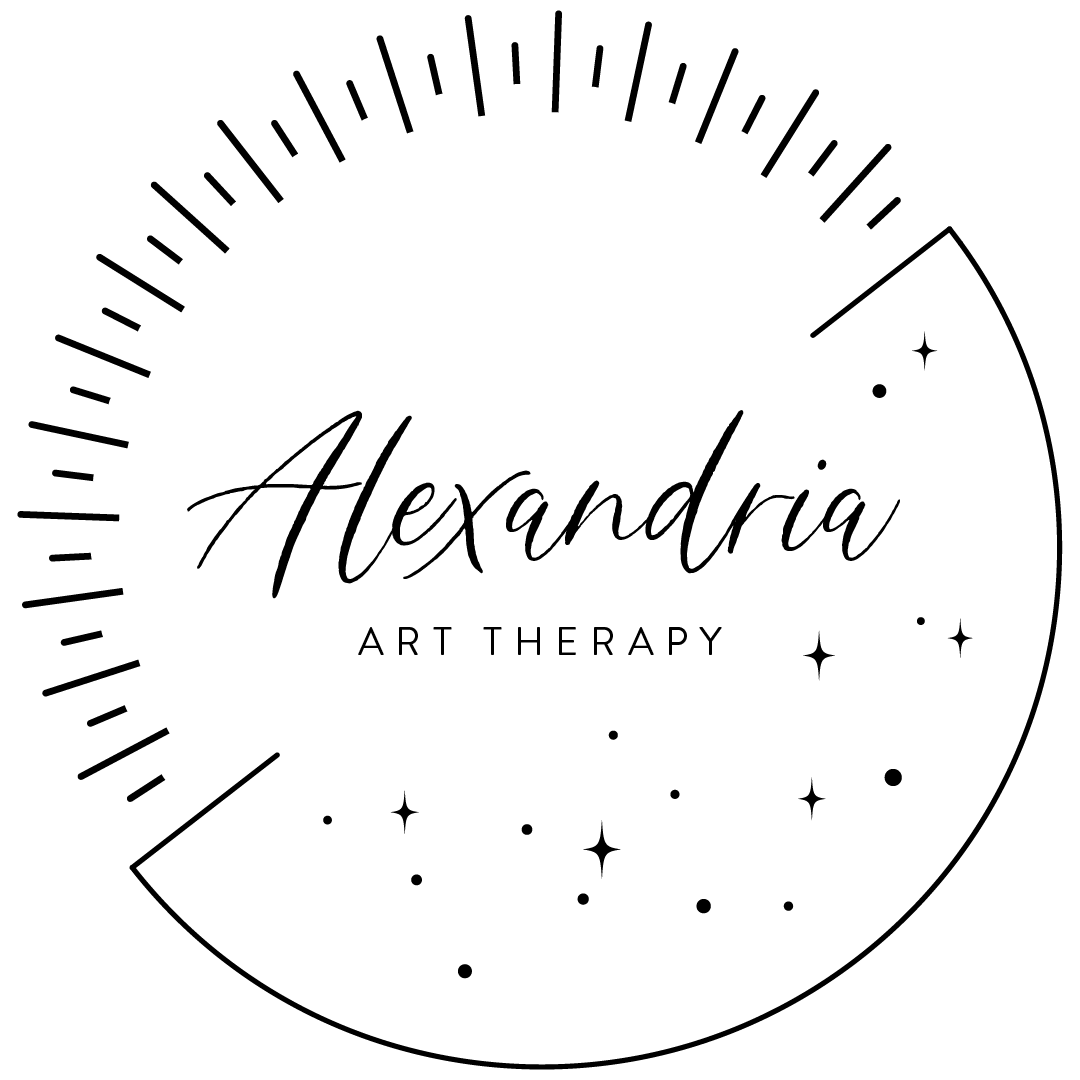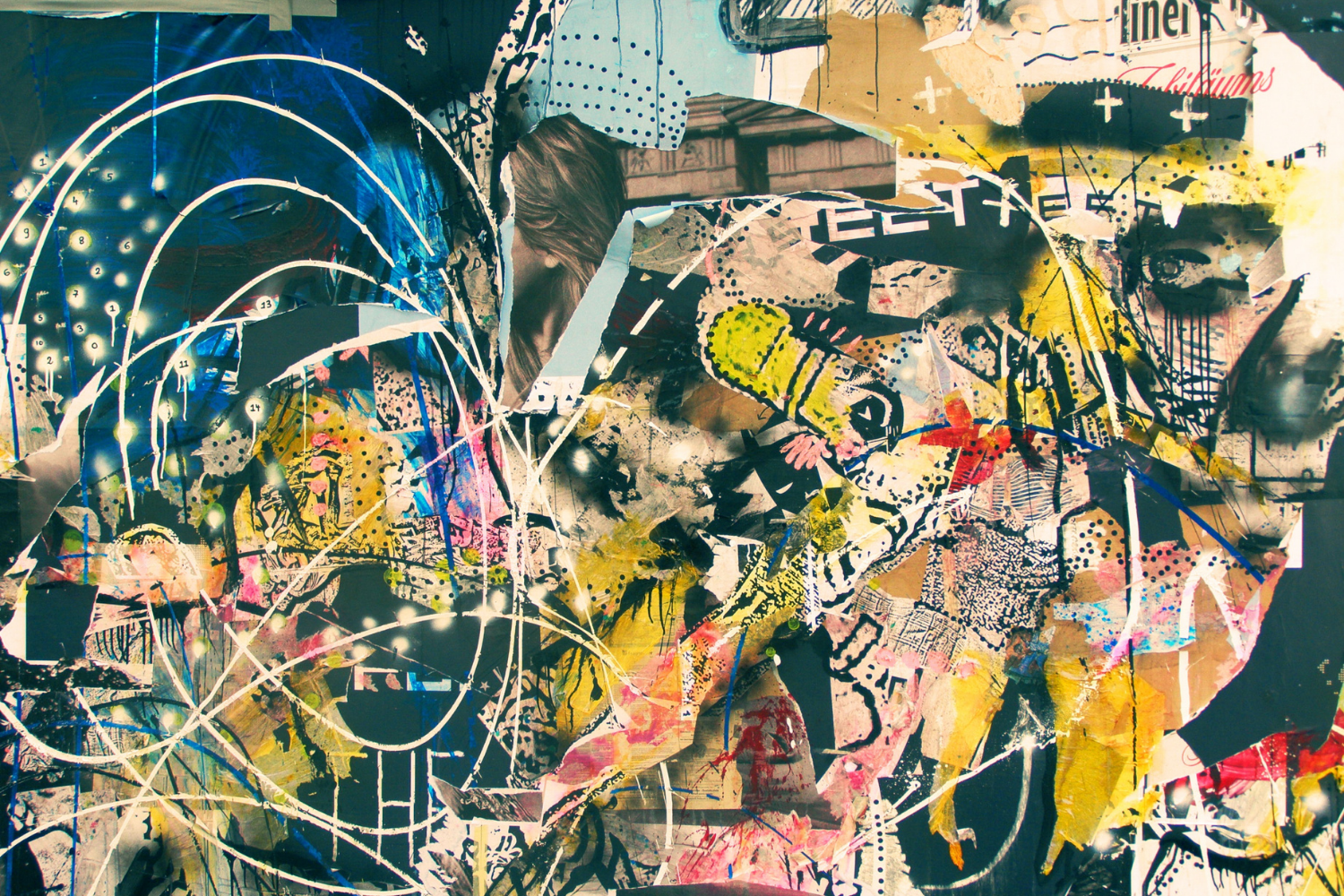Collage as an Art Therapy Medium
When we think about making art, often painting or drawing first comes to mind. As an art therapist, sometimes people say to me, “Art therapy won’t work for me because I can’t draw.” But drawing is just one artistic medium. Collage is a tool you can use to create images that are very meaningful to you without having to use a learned artistic process.
EXPLORE YOUR LAYERS
As someone who doesn’t identify as a figurative artist, I appreciate collage because it enables me to create very full images without having to draw them by hand. I love the layering aspect of collage and the texture aspect--this idea that not only can I create these complex images, but they can have lots of layers.
Collage speaks directly to the process of therapy. In therapy, we are simultaneously talking about the surface level--what’s happening externally, what’s being shown to the world--while also exploring our layers underneath. This is why I often create peek-through images like windows and doors in my work.
WHAT FEELS SAFE?
In therapy, sometimes collage can also feel more safe than other mediums. One of the theories I work with is the Expressive Therapies Continuum (ETC). The idea with ETC is that all materials land on a spectrum from most resistive to most fluid.
Think about how materials flow on a paper or feel within your hand--how much control do you have with, say, watercolors on paper? Collage, with materials like paper, magazines, scissors, and glue, lands on the resistive end of the spectrum, which can feel more safe.
With materials like this, we’re working more in our logical thought processes rather than in the more fluid, emotional realm. All materials can be used in both realms, but collage tends to land more in this concrete space. And when a person feels more in control with a resistive material, then the collage can become the portal to diving deeper into the emotional.
WHERE TO START?
I have two ways in which I create collages. Sometimes I am working with images I have already found, and other times I go looking for new images. I have a container of images that I’ve pulled out over the years, which becomes an interesting journey into memory--I can see an image I’ve been holding on to and know the timeframe when I found it. It’s a small encounter with a past self. I also have collections of magazines that tend to have imagery that speaks to me if I want to turn through and find something new.
Making a collage is about sitting down with the images and seeing what speaks to you in that moment. You don’t have to know the image you’re going to create--it’s about connecting with the emotional “something” and seeing what jumps out as you’re looking at the images. It’s the internal “ooh” that you feel when you see an image that resonates. Then you can piece the images together into something meaningful.
I tend to create long-term collage series with my artwork, using strips of an image or a decorative texture that shows up over and over again. These particular pieces are meaningful to me and become like a personal theme. I will intentionally put them into multiple works because they represent a source of power or strength or resilience.
SCRAPS
When I am working with clients using collage, I often ask them to pull out images that speak to a particular theme in their lives. The client will find a variety of images and create their collage, but there will always be images leftover that they didn’t use on that piece. So we hold them to revisit later. Right now, they’re just scraps, but they all have meaning. You picked them for a reason. As I’m cleaning up my own collage art space, there’s a process I find myself going through--considering, “is this a useful scrap, or is this actually trash?”
This is where the real power of art therapy shines--every image holds significance and power, and working with this tangible paper gives us a way to sift through and sort. What is front of mind today? What will be useful down the road? What is just beginning to surface, but I can’t go there right now?
There’s something visceral about having these small pieces you can literally move around and then assemble together. In art therapy there’s often a destruction and recreation process, and that very much shows up in collage art. We are cutting images apart to find the piece that feels right, then reassembling them according to our own definition of significance. We can use the scraps of our experiences, our memories, to then create a narrative that helps us understand our lives.


